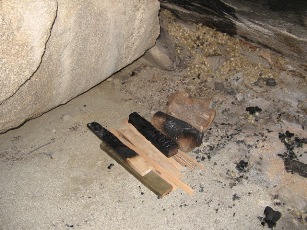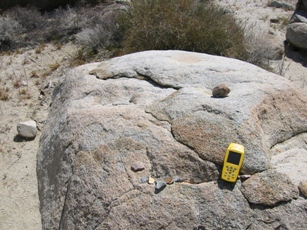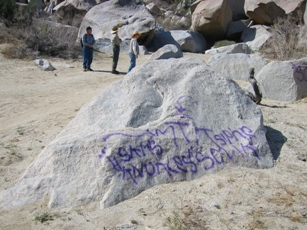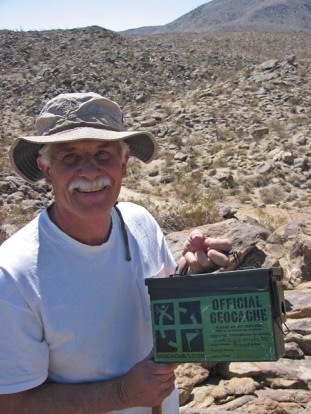Natural events and human activities can impact the integrity of archaeological sites. When sites are damaged, important information about past lifeways is lost because the people of the past will never be here again to live their lives as they once did. The evidence they left in archaeological sites is finite and cannot renew itself once it has been disturbed.
Activities that cause ground disturbance might break, chip, crush, or move artifacts. Features such as ancient campfires or hearths may be destroyed. People traveling off trail by bike, horse, or foot, and vehicles traveling off road can damage sites, often without being aware they are causing permanent harm. Flooding and erosion can cause some of the same harm to sites. Campfires outside of designated campsites can contaminate archaeological sites and cause smoke damage to rock art. Fires, both wild and intentional, can cause bedrock to spall, crumble or flake off into pieces. Rock art and milling elements can be damaged or destroyed by fire.


On the left, smoke damage can see seen caused by an illegal campfire.
An illegal campfire in a rockshelter that Native Americans
used in the past is pictured on the right.

Sometimes park visitors gather artifacts and place them on a rock or a spot on the ground for others to find and enjoy. Sometimes they give the artifacts to park rangers in an attempt to protect the artifacts. However, at many archaeological sites in our state parks, the artifacts were placed where they are by the last people who lived there. Visitors do not realize that moving artifacts compromises the landscape and setting and removes artifacts from their archaeological context. The relationships among artifacts and features provide information about how, when, and where these items were used. That information is lost when artifacts are moved from their original location.
Vandalism is a source of loss and damage to archaeological sites that is caused intentionally. Harmful activities caused by vandals include defacing rock art or bedrock milling features, digging holes to look for artifacts, and collecting artifacts from the surface. Vandalism deprives us and future generations of the opportunity to experience our various histories in these special places.
Note: In image above, artifacts collected and placed on a boulder are now out of context.


Top: Graffiti at an archaeological site and graffiti inside a rockshelter.
Bottom: Shotgun shell leftover from target practice at a site and
Geocache container found hidden in an archaeological site.

